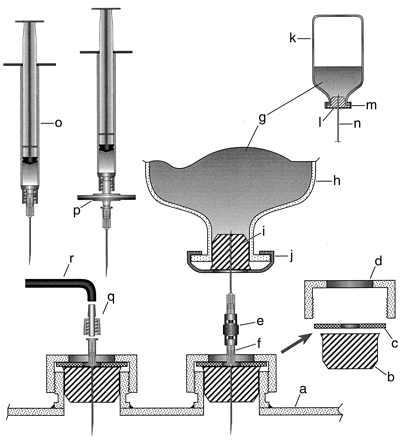arge-scale and continuous culture
A flexible large-scale batch culture unit has been established for the growth of plant cell suspension cultures. This unit has been changed to permit of continuous or intermittent renewal of culture medium and in a modified form incorporated into open continuous culture systems of the turbidostat and chemostat kind. A fully automatic culture sampler has been incorporated into the simple culture unit.
If a stirred tank reactor is fed with fresh medium at a constant rate and excess is allowed to flow to waste a culture will be created with constant growth rate. This is known as steady-state culture. If limited through carbon source this is called a chemostat, but biomass and redox variations are possible. The constant and defined nature of the culture allows the calculation of many parameters including replacement time, maximum growth rate or biomass and growth-limiting substrate concentrations.

The Continuous culture studies were initiated through us for two purposes. The first was to establish a better understanding of the regulatory mechanisms involved in the biosynthesis of alkaline protease neutral protease and a-amylase through Bacillus subtilis NRRL-~341 me. This information is fundamental to understanding how to alter these mechanisms in order to give a desired kind of micro-organism.
Shake-flask batch culture provides a simple and convenient technique of growing small amounts of microorganisms. However, if grams of biomass are needed for protein purification or liters of medium are needed for product recovery then the limitations of the shake flask quickly become apparent. The most significant problem is getting enough oxygen to the culture: to grow a 5 liter culture in a single flask would require a 50 liter glass Erlenmeyer flask if the ratio of one-tenth volume of culture to the total volume of container is maintained. Furthermore the shake flask is a highly dynamic system. As the organism grows it excretes primary and secondary metabolites into the medium. Some of these metabolites might actually prevent efficient use of the substrate but more significantly there may be a change in pH by many units. If a batch culture of 1 liter or more is to be grown efficiently more controlled conditions are required.